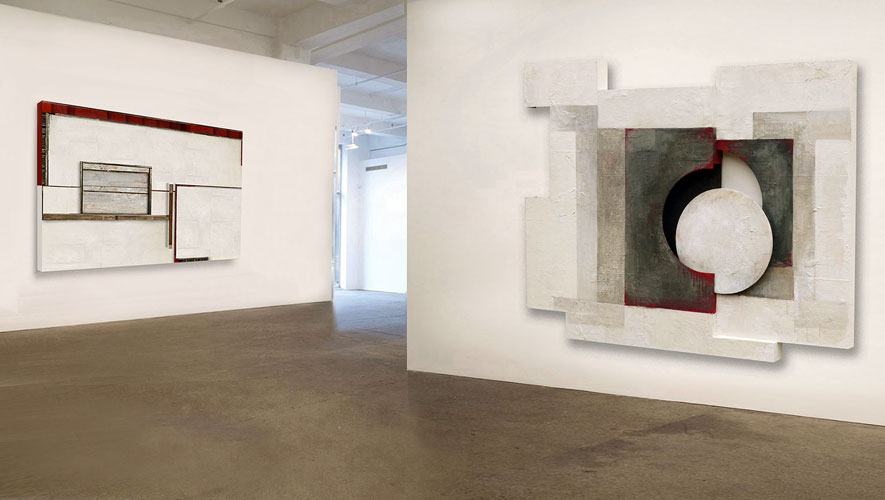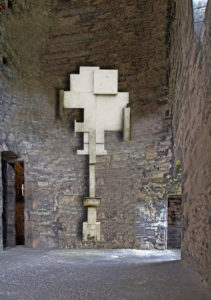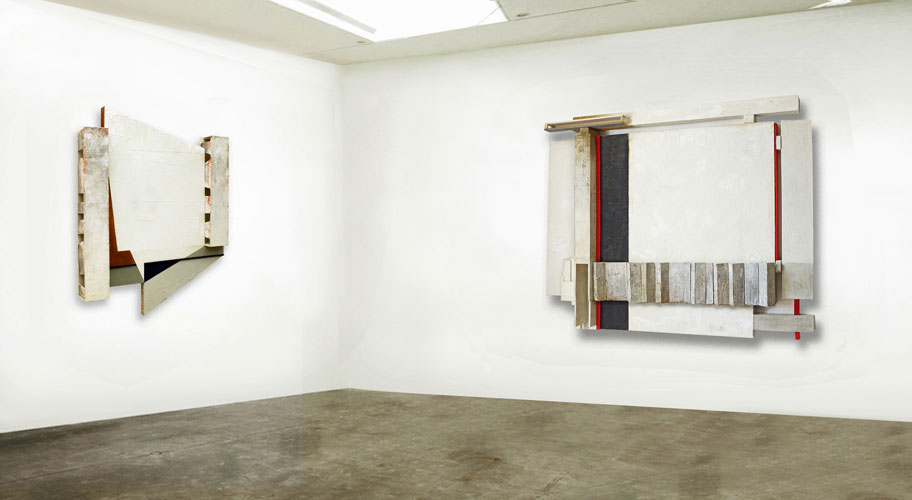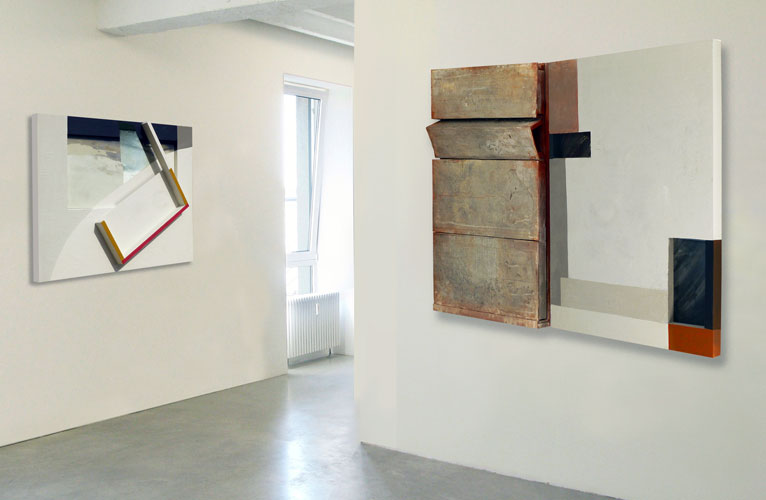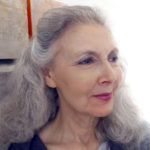Art, // June 9, 2019
Juliet Vles — ARTIST
The ART of Juliet Vles —
Juliet Vles is an European multidisciplinary artist. Her oeuvre spans a period of more than three decades and includes painting, wall sculpture, drawing, print making and installation. In her recent work, the artist increasingly abandons the notion of making images and rather sees her art as an extension of living architecture.
Vita
Born in the Netherlands in 1950, Vles grew up in Switzerland and actually lives and works in the South of France. Essentially an abstract artist, whose work is mainly to be found in arte povera and minimal art collections, she also tried her hand at many other art styles like surrealism and satire, as well as installation work conceived for different group exhibitions. Vles never submitted to careerist strategies, preferring to pursue her personal conception of artistic quality and human ethics. Although this critical attitude was hardly helpful to boost her work in a market-oriented art world, the originality and coherence of her oeuvre allows her to survive as an independent artist.
The Krypta series
The wall sculptures of the Krypta series, which the artist started in 2005 and pursues to this day, are abstract geometrical wood constructions, overlaid with painting, drawing, writing and with panels incrusted, intarsia like, into the supporting frame. The word «krypta» (from Greek «hidden», «secret») stands for an artistic expression that interprets neither the reality nor the abstraction of our cognitive being, but an imago of the un-thought, an unconscious area of perception not directly accessible to analytical intelligence. Conform to the arte povera doctrine, the material used – industrial paint, glue, paper, plywood – has no intrinsic monetary value. The legitimation of the oeuvre is purely artistic.
 transCerebral
transCerebral
The « transCerebral » cycle is a critical and satirical reflexion on the ambiguous role of the brain in our society. Metaphor of the schizophrenic condition of human intelligence, these images denounce the alarming discrepancy between our cognitive intelligence and our incapacity to usefully transfer our technical knowledge into social life. This asymmetric development of the brain has created the “Myopic Mastermind”, a short-sighted genius able to defy natural law, to fly to Mars, to perform complex medical operations and to construct skyscrapers, bridges and any amount of lethal weapons but who, at the same time, is unable to master even his most basic instincts and seems wholly incapable to consistently put his technical intelligence to intelligent, e.g. constructive use. This disparity may well prove the main difficulty in the merging of biological and artificial intelligence. Given the nano-mechanical means, it will doubtlessly be possible to boost our cognitive intelligence. But this operation might also increase the gulf between technical and what we may call evolutionary intelligence – the capacity to use our trained brains to better the conditions of life on our planet – and leave us with even more highly educated and particularly destructive autistic criminals.
Glassworks
In 2017 Vles started working on a series of reverse glass paintings, revisiting the glassworks series created between 1997 and 2003 and drawing on the technical experience she acquired during that period. The pieces used for the glass mosaic are painted in a reverse glass technique “Hinterglasmalerei,” then glued on wood panels and inserted into an acrylic-painted wooden support.
The glassworks live by their play with light, reflection and transparency. At first sight, the complementary painting on wood and glass seems to merge into an overall geometric pattern. But as the glass part is subject to exterior influences like light and reflections, the osmosis of painting and environment continues to create new images, depending on the light, the time of the day and the place where the picture is hanging. These multifaceted transformations of the glass-imago make the fascination of the glass medium.
Why art?
From the caves to the museum to the urban scene, our perception of art has changed with its social context. If painting was once a representation of reality, this function has been largely ursurped by photography and video, which have become art for their part. But simple representation is, and has never been, enough – nor is intellectual or esthetical interpretation. The first and final criterion of art is its capacity to connect with the non-verbal layers of our brain and so enlarge or even change our perception of being. This is the benchmark by which every form of art shall finally be judged.
LINKS —
Website: http://julietvles.monsite-orange.fr/
Saatchi Art (abstract work): https://www.saatchiart.com/julietvles
Feature/Video: https://canvas.saatchiart.com/art/inside-the-studio/juliet-vles
Singulart: https://www.singulart.com/fr/artiste/juliet-vles-1341
Glassworks (google+): https://goo.gl/photos/t2kdxM7C4ZjQBy8eA
transCerebral (google+): goo.gl/photos/RseXeWaCBKE95M8p8
Saatchi Art (brainscapes): https://www.saatchiart.com/vlesworks
Facebook: https://fr-fr.facebook.com/juliet.vles




